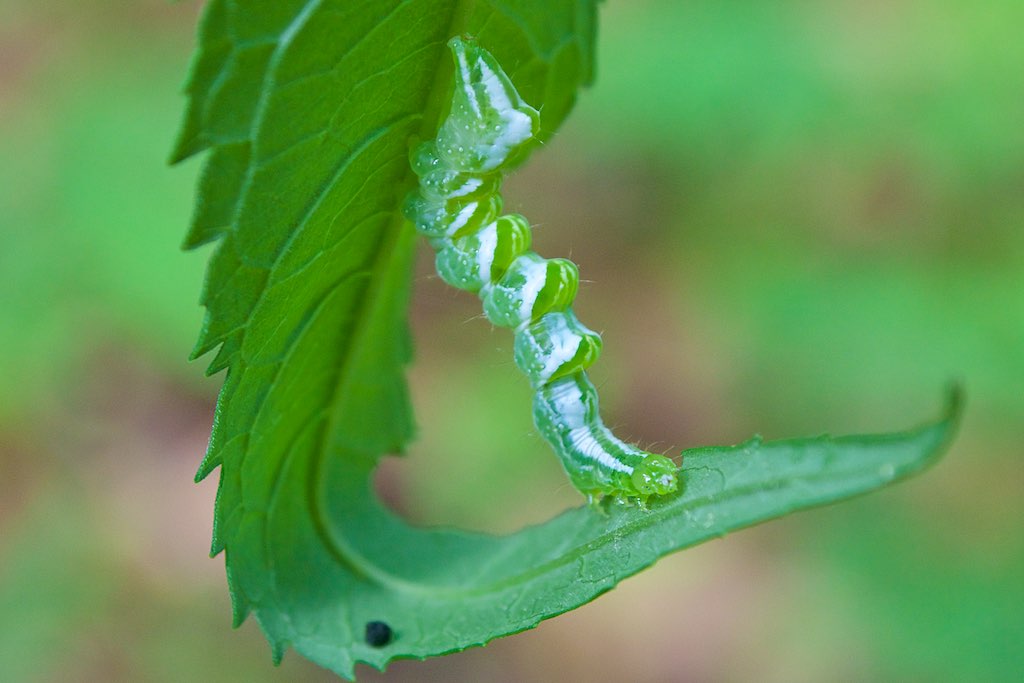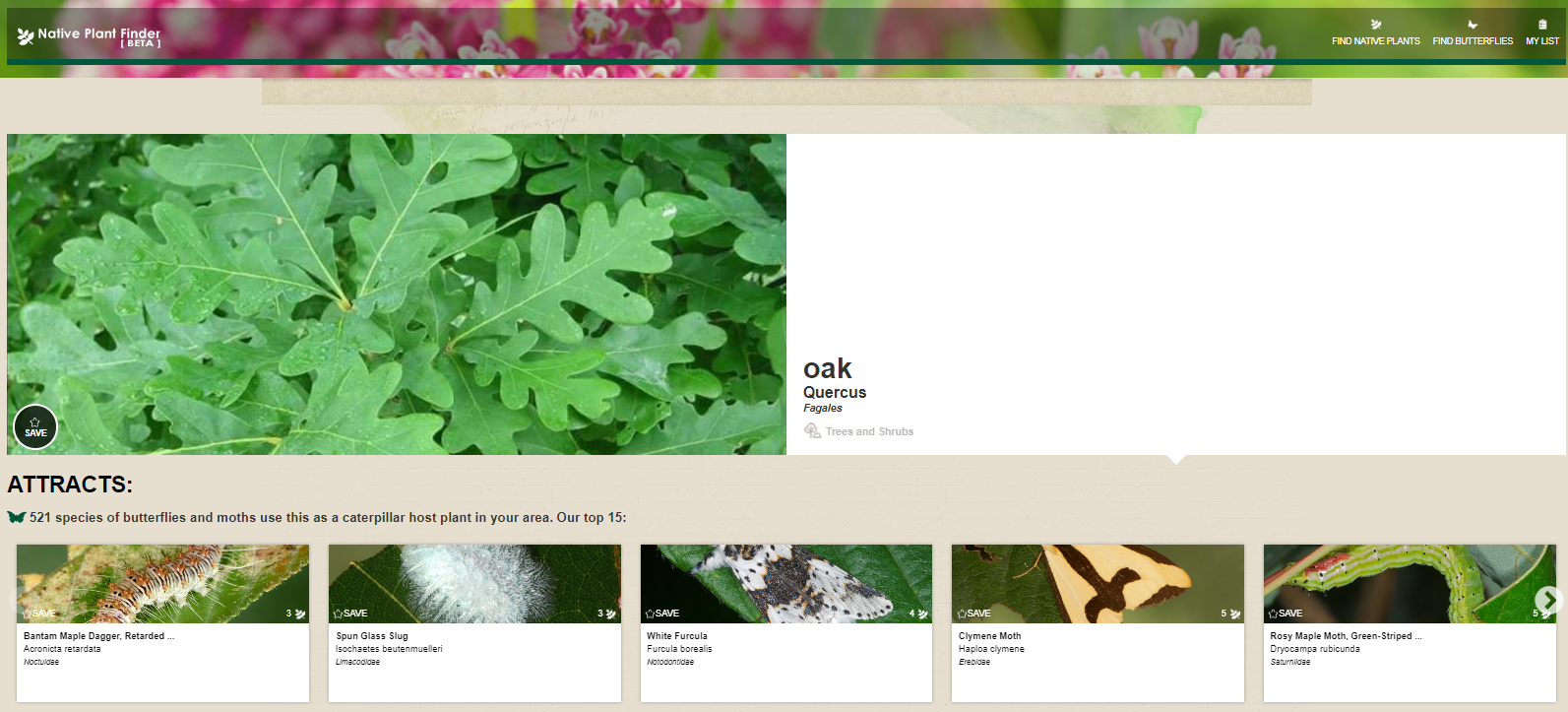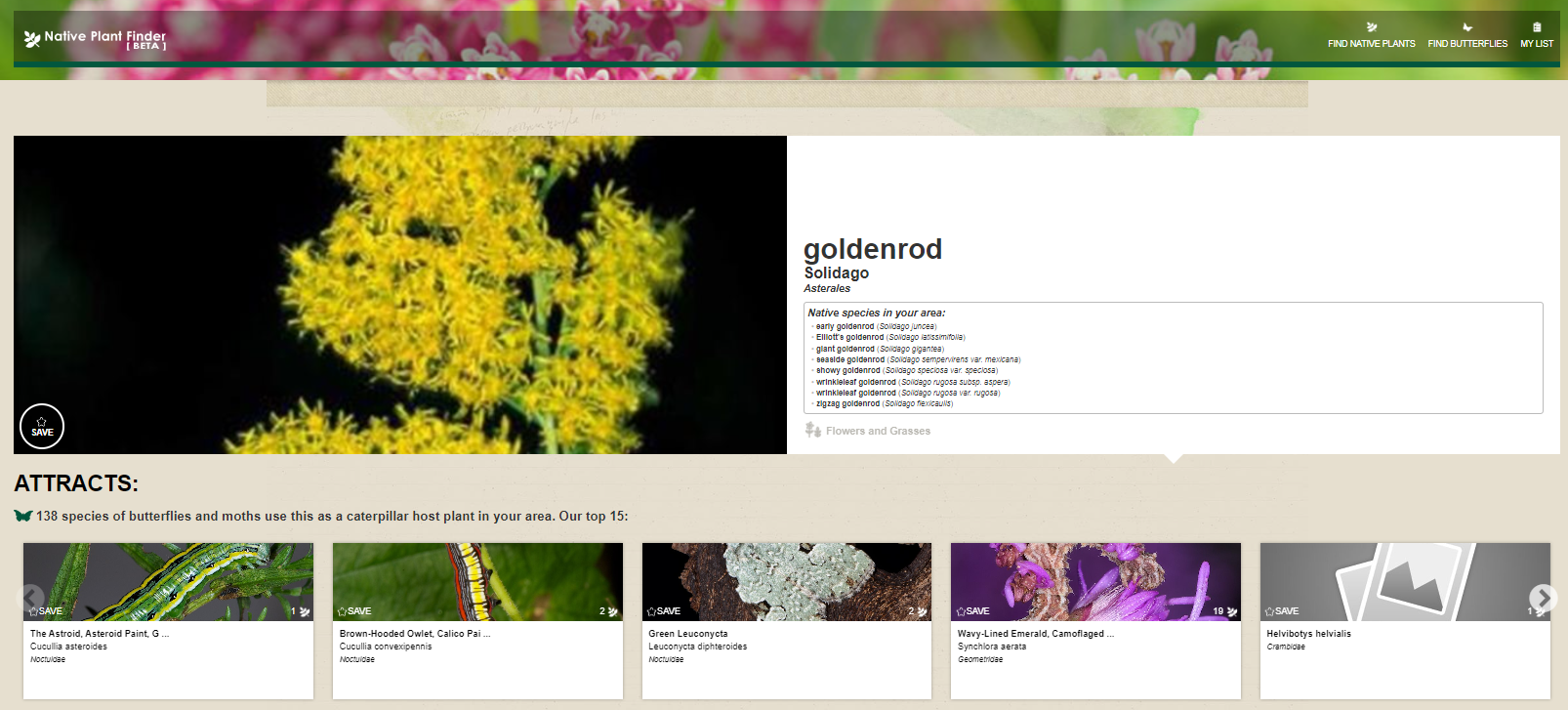Want more wildlife on your property? Then you may want to focus on adding native plants that support more caterpillars by using the Native Plant Finder tool.
Caterpillars eat the leaves of native plants and use this energy to grow and transform into moths and butterflies. When your plants feed lots of caterpillars, the caterpillars in turn feed lots of birds. Many songbirds need to consume several thousand caterpillars in a single breeding season to reproduce and feed their young. Caterpillars, of course, turn into beautiful butterflies and moths that pollinate many types of flowering plants, helping them produce the fruits and seeds that create the next generation of plants and feed many other wildlife species.

Caterpillars like this Pink Patched Looper Moth feed on native plants and in turn feed birds and support other wildlife.
Photo Credit: Distant Hill Garden and Nature Trail, Creative Commons License
So how can you get more caterpillars on your woodlot? A new tool called Native Plant Finder from the National Wildlife Federation, US Forest Service and University of Delaware, helps you do just that. Enter your zip code to get two different lists of native plants that will thrive in your area: “flowers and grasses” and “trees and shrubs.” Each plant list is ordered by the number of different caterpillar species the plants support. Use this link to access the Native Plant Finder tool.
When you select a type of native plant, the tool provides a list of the top 15 caterpillar species that use the plant as a host. The list of caterpillars is ordered from most to least picky in terms of the number of different plant hosts upon which they will feed.
According to the Native Plant Finder tool, oak trees support the most caterpillars in my region.
Using the Native Plant Finder for my home in the lower Hudson Valley of New York, I find that oak trees support a whopping 521 species of butterflies and moths – more than any other type of native plant! Caterpillars attracted to my oaks include a picky eater called the Bantam Maple Dagger who feeds only on oaks, maples, and sweet gums and the Funerary Dagger Moth that is more of a generalist who feeds on 18 different plant types including oak, birch, pine and blackberry, just to name a few.
Planting goldenrod will provide food for up to 138 species of butterflies and moths.
I also learn that goldenrod, strawberry and sunflowers are the flowers and grasses that support the most caterpillar species in my area. For example, goldenrod is host to 138 different butterflies and moths, including many that only eat goldenrod. After I plant goldenrod, it will be fun to see what new caterpillars find their way to my property!
As I consider what native plants to add to my property this spring, I now have a tool to help me prioritize caterpillars and the wildlife benefits they provide. This link takes you to a list of MyWoodlot resources to help you consider what native plants to add to your property.







